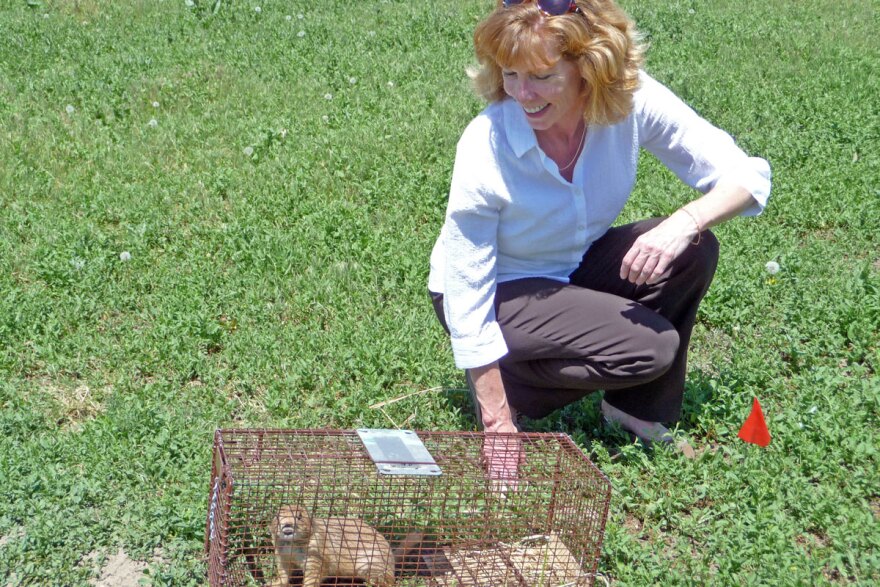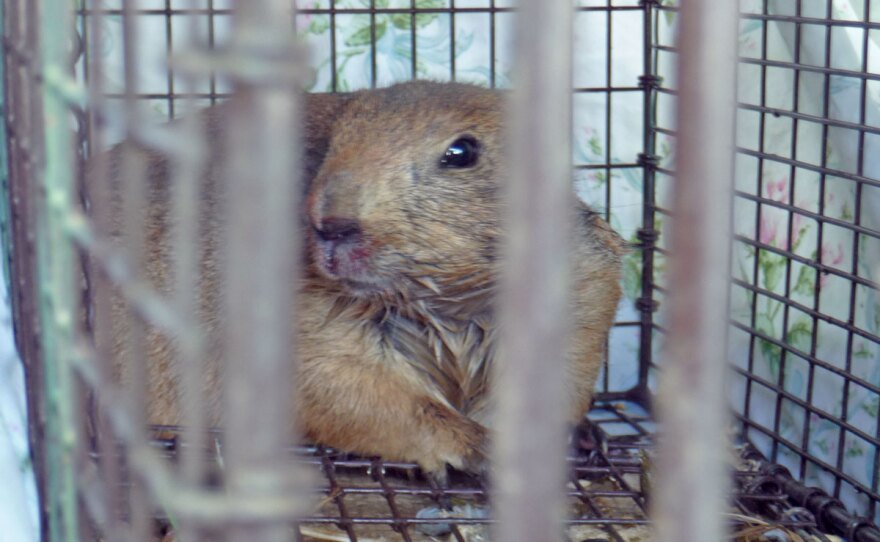Some residents in Fort Collins are considered a nuisance. In Colorado, it is legal to kill them -- using slingshots and handguns. But the biggest threat to prairie dogs is the state’s rising population.
The rodents are native to North America, and live together in underground burrows. In past years, as developers eyed vacant fields, they could simply plow over the animals’ burrows with bulldozers, burying them alive. Currently the city requires that the animals be exterminated more humanely, with gas, before construction begins.
Now a group of advocates says there’s a way to save the prairie dogs.
“Always the problem is finding the space, nobody wants to take them, and the city has the room and that’s what we want,” said Helen Taylor.
She’s a founding member of the Fort Collins Prairie Dog Relocation Group, which managed to get a special dispensation for a few hundred prairie dogs in Fort Collins recently. That required cooperation -- from the city as well as the developer that allowed the advocates onto the property, giving them time to capture the prairie dogs for relocation.

It’s a possible model for the future. For now, this small colony was saved when they were moved to the Cathy Fromme Prairie Natural Area, which is owned and managed by the city.
Taylor and her group are working with the city on a plan to reserve a portion of the 40,000 acres managed by Fort Collins for prairie dogs. But that requires a change to city policy.
And not everyone is sold on the idea, including John Stokes, director of natural areas for the city.

“We’re managing for an entire prairie ecosystem,” Stokes said.
There are already areas with prairie dogs in the city's natural areas, he noted, but they are at capacity.
“Our recommendation is not to go over that threshold. If you have some space there, great, put some prairie dogs in but if you’re at that threshold, probably not a good idea to move prairie dogs around.”
Prairie dogs are a valuable part of the ecosystem. They are a key food source for many animals, including the endangered black footed ferret. Burrowing owls and snakes use the animals’ burrows for shelter.

The Fort Collins City Council will consider changing its rules for relocating prairie dogs this fall. The effort to save the small colony in the city this summer is expected to inform that process.
Another source of inspiration could be the city of Boulder, which mandates that developers first contact neighboring open spaces and municipalities to see if the prairie dogs can be moved. The city also imposes a 90- day waiting period to see if anyone will attempt to save the animals.
But city officials in Boulder say that not once in 10 years has a private landowner stepped forward to offer a new home to the prairie dogs. Sometimes they are moved to publicly owned lands. Most of the time they are killed.







